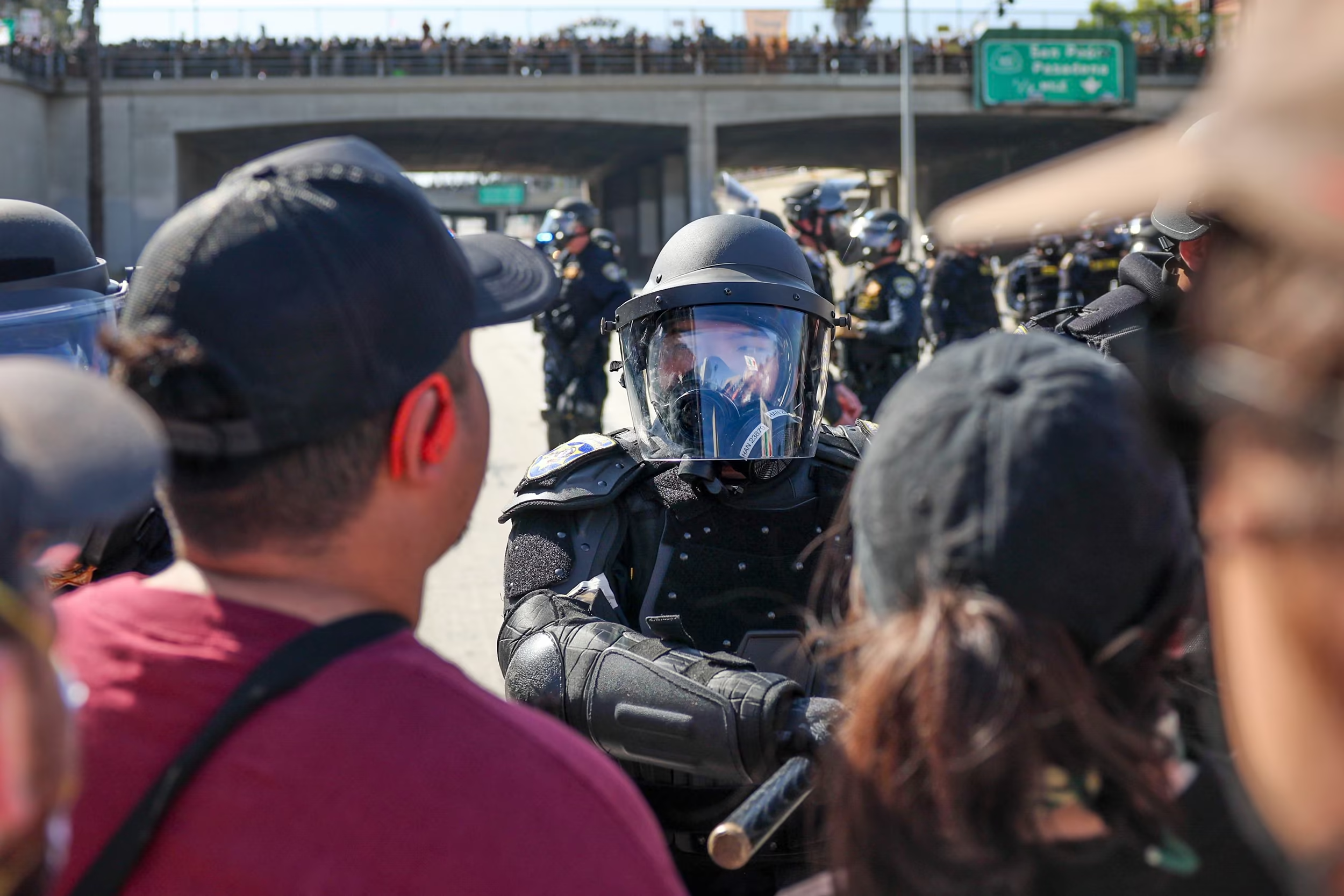In a single day, Los Angeles police fired more than a thousand special munitions at demonstrators. According to a department report released Monday as part of mandatory use-of-force disclosures, the incidents stem from protests against immigration raids under the Trump administration and the decision to deploy the National Guard in the city.
The document details the use of rubber and foam rounds, beanbag shotguns and tear gas. On June 6, police fired 34 rounds at roughly a hundred demonstrators. But on June 8, when about 6,000 people took to the streets, officers used 1,040 munitions, including 20 CS canisters—a form of tear gas. Six injuries were reported as a result.
Police said 584 officers were on site that day. Protesters blocked a major highway and set fire to several driverless cars.
The report drew concern from Josh Parker, deputy policy director at the Policing Project at New York University School of Law. "Judging from these numbers, if this is how you are dispersing a protest, then you are doing it wrong," he said.
The mass use of crowd-control weapons once again raised questions about their deployment by police. After journalists were hit, a federal judge issued a temporary order barring Los Angeles police from using rubber bullets and other munitions against members of the press.
One protester, who lost a finger after being struck by a round, filed a civil rights lawsuit against the city of Los Angeles and the county sheriff’s office.
California has imposed restrictions on so-called "less-lethal" weapons since 2021. They may only be used after attempts to resolve the situation without force. Firing blindly into a crowd is prohibited, as is targeting the head, neck or other vital organs. Their use is also barred in cases of curfew violations, verbal threats against police or refusal to disperse after a gathering has been declared unlawful.
"Such an enormous volume of rounds fired over such a short period gives me serious concern that the law and established rules were violated," Parker emphasized.
A Los Angeles police spokesperson did not immediately respond to a request for comment. In a statement published by the Los Angeles Times on June 23, department chief Jim McDonnell said the LAPD was preparing "a comprehensive review of every use-of-force incident."
According to him, the days of protests, which unfolded in "dangerous, unstable and ultimately violent conditions," left 52 police officers injured and in need of medical treatment. McDonnell insisted that officers’ actions were justified by the need to prevent further casualties.
Tensions in downtown Los Angeles spiked on June 8, when a National Guard unit arrived in the city to protect federal buildings.
"Provocateurs in the crowd damaged buildings and hurled rocks, chunks of concrete, Molotov cocktails and other objects at police officers," the report said.
By evening, a large share of the demonstrators had dispersed, but on one street protesters built a barricade out of chairs and hurled objects at police. Others, positioned above the closed southbound lanes of Highway 101, threw chunks of concrete, rocks, e-scooters and fireworks down at California Highway Patrol officers and their vehicles.
Police repeatedly declared the gathering unlawful and cordoned off several blocks of downtown, but the crowd refused to disperse. In the end, the report noted, the use of special munitions became the means of regaining control of the situation.
